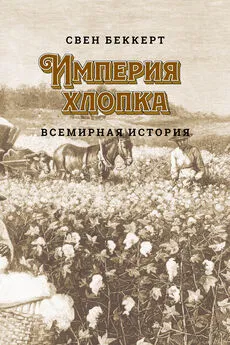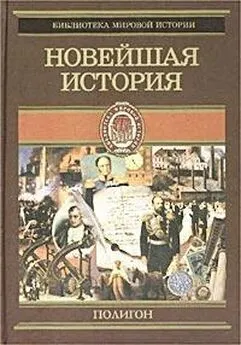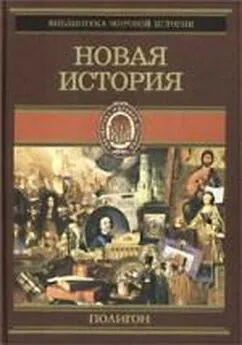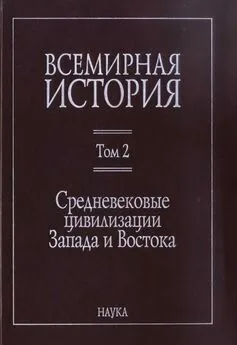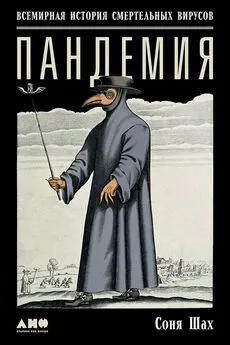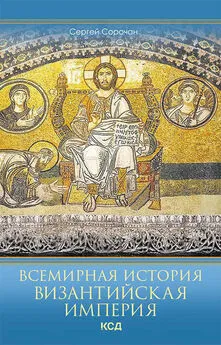Свен Беккерт - Империя хлопка. Всемирная история
- Название:Империя хлопка. Всемирная история
- Автор:
- Жанр:
- Издательство:неизвестно
- Год:неизвестен
- ISBN:978-5-93255-528-6
- Рейтинг:
- Избранное:Добавить в избранное
-
Отзывы:
-
Ваша оценка:
Свен Беккерт - Империя хлопка. Всемирная история краткое содержание
Империя хлопка. Всемирная история - читать онлайн бесплатно ознакомительный отрывок
Интервал:
Закладка:
6
Edward Baines, History of the Cotton Manufacture in Great Britain (London: H. Fisher, R. Fisher, and P.Jackson, 1835), 5–6; см.: Kenneth Pomeranz, The Great Divergence: China, Europe, and the Making of the Modern World Economy (Princeton, N.J.: Princeton University Press, 2000); Кеннет Померанц, Великое расхождение. Китай, Европа и создание современной мировой экономики (Москва: Издательский дом “Дело”, 2017).
7
Jared Diamond, Guns, Germs, and Steel: The Fates of Human Societies (New York: Norton, 1998); Джаред Даймонд, Ружья, микробы и сталь. Судьбы человеческих обществ (Москва: АСТ, 2009); David Landes, The Wealth and Poverty of Nations: Why Some Are So Rich and Some So Poor (New York: W. W. Norton, 1998); Niall Ferguson, Civilization: The West and the Rest (New York: Allen Lane, 2011); Ниал Фергюсон, Цивилизация. Чем Запад отличается от остального мира (Москва: АСТ, 2014); Robert Brenner, “Agrarian Class Structure and Economic Development in Pre-Industrial Europe,” Past and Present , no. 70 (February 1976): 30–75; Robert Brenner, “The Agrarian Roots of European Capitalism,” Past and Present , no. 97 (November 1982): 16–113; E. P. Thompson, The Making of the English Working Class (New York: Pantheon, 1963).
8
Существует потрясающая литература о рабстве и капитализме, включая Eric Williams, Capitalism and Slavery (New York: Russell & Russell, 1961); Rafael de Bivar Marquese, “As desventuras de um conceito: Capitalismo historico e a historiografia sobre escravidao brasileira,” Revista de Historia 169 (July/December 2013), 223–253; Philip McMichael, “Slavery in the Regime of Wage Labor: Beyond Paternalism in the U.S. Cotton Culture,” Social Concept 6 (1991): 10–28; Barbara L. Solow and Stanley L. Engerman, British Capitalism and Caribbean Slavery: The Legacy of Eric Williams (New York: Cambridge University Press, 1987); Gavin Wright, The Political Economy of the Cotton South: Households, Markets, and Wealth in the Nineteenth Century (New York: Norton, 1978); Joseph E. Inikori, Africans and the Industrial Revolution in England: A Study in International Trade and Development (New York: Cambridge University Press, 2002).
9
Cotton Supply Reporter , no. 37 (March 1, 1860): 33.
10
Andrew Ure, The Cotton Manufacture of Great Britain Systematically Investigated, and Illustrated by 150 Original Figures , vol. 1 (London: Charles Knight, 1836), 67–68.
11
Bruno Biedermann, “Die Versorgung der russischen Baumwollindustrie mit Baum-wolle eigener Produktion” (PhD dissertation, University of Heidelberg, 1907), 4; Edward Atkinson, Cotton: Articles from the New York Herald (Boston: Albert J. Wright, 1877), 4.
12
E.J. Donnell, Chronological and Statistical History of Cotton (New York: James Sutton & Cº, 1872), v.
13
По этому вопросу существует обширная литература, включая Immanuel Wallerstein, The Modern World-System , vol. 3, The Second Great Expansion of the Capitalist World-Economy, 1730–1840s (San Diego, Academic Press: 1989); Иммануил Валлерстайн, Мир-система Модерна . Том III. Вторая эпоха великой экспансии капиталистического мира-экономики, 1730–1 840-е годы (Москва: Русский фонд содействия образованию и науке, 2016); Dale W. Tomich, Slavery in the Circuit of Sugar: Martinique and the World Economy, 1830–1848 (Baltimore: Johns Hopkins University Press, 1990); Andre Gun-der Frank, ReORIENT: Global Economy in the Asian Age (Berkeley: University of California Press, 1998); Abdoulaye Ly, La theorisation de la connexion capitaliste des continents (Dakar: IFAAN, 1994); John Gallagher and Ronald Robinson, “The Imperialism of Free Trade,” Economic History Review , Second Series, 51 (1953): 1–15; Patrick Wolfe, “History and Imperialism: A Century of Theory,” American Historical Review 102 (April 1997): 388–420.
14
Baines, History of the Cotton Manufacture , 530–531.
15
См., например, Gene Dattel, Cotton and Race in the Making ofAmerica: The Human Costs of Economic Power (Chicago: Ivan Dee, 2009); Morris de Camp Crawford, The Heritage of Cotton: The Fibre of Two Worlds and Many Ages (New York: G. P. Putnam’s Sons, 1924).
16
Литература по всемирной истории быстро множится. Однако это едва ли новое изобретение. Только вспомните такие работы, как: Abdoulaye Ly, La Compagnie du Senegal (Paris: Presence Africaine, 1958); Marc Bloch, “Toward a Comparative History of European Societies,” in Frederic Chapin Lane and Jelle C. Riemersma, eds., Enterprise and Secular Change: Readings in Economic History (Homewood, IL: R. D. Irwin, 1953); Williams, Capitalism and Slavery ; C. L. R.James, The Black Jacobins (London: Secker & Warburg, 1938). См. также: C. A. Bayly, The Birth of the Modern World, 1780–1914: Global Connections and Comparisons (Malden, MA: Blackwell, 2004); Jurgen Osterhammel, The Transformation of the World: A Global History of the Nineteenth Century (Princeton, N.J.: Princeton University Press, 2014). Обзоры литературы см.: в Sebastian Conrad, Globalgeschichte: Eine Einfuhrung (Munich: Beck, 2013); Dominic Sachsenmaier, Global Perspectives in Global History: Theories and Approaches in a Connected World (New York: Cambridge University Press, 2011); Sven Beckert and Dominic Sachsenmaier, Global History Globally (Honolulu: Hawaii University Press, in preparation); Bruce Mazlich and Ralph Buultjens, Conceptualizing Global History (Boulder, CO: Westview Press, 1993); Jerry Bentley, “The Task of World History” (unpublished paper, in author’s possession); см. также: Robert C. Allen, The British Industrial Revolution in Global Perspective (Cambridge: Cambridge University Press, 2009); Роберт Аллен, Британская промышленная революция в глобальной картине мира (Москва: Издательство Института Гайдара, 2014); Jan Luiten van Zanden, The Long Road to Industrial Revolution: The European Economy in a Global Perspective, 1000–1800 (Amsterdam: Brill, 2009); блестящая работа, например, Patrick O’Brien, “European Economic Development: The Contribution of the Periphery,” Economic History Review , Second Series, 35 (February 1982): 1–18.
17
В последние годы было много исследований, посвященных товарам. См., например: Sydney Mintz, Sweetness and Power: The Place of Sugar in Modern History (New York: Viking, 1985); Mark Kurlansky, Salt: A World History (New York: Walker and Co., 2002); Марк Курлански, Всеобщая история соли (Москва: Колибри, 2007); Barbara Freese, Coal: A Human History (Cambridge, MA: Perseus, 2003); Pietra Rivoli, The Travels of a T-shirt in the Global Economy: An Economist Examines the Markets, Power and Politics of World Trade (Hoboken, NJ: John Wiley & Sons, 2005); Larry Zuckerman, The Potato: How the Humble Spud Rescued the Western World (Boston: Faber & Faber, 1998); Wolfgang Monninghoff, King Cotton: Kulturgeschichte der Baumwolle (Dusseldorf: Artemis & Winkler, 2006); Mark Kurlansky, Cod: A Biography of the Fish That Changed the World (New York: Walker & Cº, 1997); Allan Macfarlane and Gerry Martin, Glass: A World History (Chicago: University of Chicago Press, 2002); Stephen Yaffa, Big Cotton: How a Humble Fiber Created Fortunes, Wrecked Civilizations, and Put America on the Map (New York: Penguin, 2005); Erik Orsenna, Voyage aux pays du coton: Petit precis de mondialisation (Paris: Fayard, 2006); Iain Gateley, Tobacco: A Cultural History of How an Exotic Plant Seduced Civilization (New York: Grove, 2001); Heinrich Eduard Jacob, Kaffee: Die Biographie eines weltwirtschaftlichen Stoffes (Munich: Oekom Verlag, 2006). Прекрасное исследование «биографии вещей» можно найти в работе 1929 года: Sergej Tretjakow, “Die Biographie des Dings,” in Heiner Boehnke, ed., Die Arbeit des Schriftstellers (Reinbeck: Rowolt, 1972), 81–86; Сергей Третьяков, “Биография вещи”, в Н. Ф. Чужак (ред.), Литература факта: Первый сборник материалов работников ЛЕФа (Москва: Захаров, 2000); Jens Soentgen, “Geschichten uber Stoffe,” Arbeitsblaetter fur die Sachbuchforschun (October 2005): 1–25; Jennifer Bair, “Global Capitalism and Commodity Chains: Looking Back, Going Forward” Competition and Change 9 (June 2005): 153–80; Immanuel Wallerstein, Commodity Chains in the World-Economy, 1590–1790 (Binghamton, NY: Fernand Braudel Center, 2000). Хороший пример успешной корректировки экономической истории William Cronon, Nature’s Metropolis: Chicago and the Great West (New York: Norton, 1991). Хорошее описание обширной историографии промышленной революции можно найти в Inikori, Africans and the Industrial Revolution in England ; William J. Ashworth, “The Ghost of Rostow: Science, Culture and the British Industrial Revolution,” Historical Science 46 (2008): 249–74. Важность пространственных аспектов капитализма подчеркивается в David Harvey, Spaces of Capital: Towards a Critical Geography (New York: Routledge, 2001).
18
Хлопок, выращивавшийся в этих городах, вероятнее всего был G. hirsutum Palmeri , род хлопка, о котором известно, что он выращивался в местности, являющейся сейчас мексиканскими штатами Оахака и Герреро. Описание растения из C. Wayne Smith and J. Tom Cothren, eds., Cotton: Origin, History, Technology, and Production (New York: John Wiley & Sons, 1999), 11; Angus Maddison, The World Economy: A Millennial Perspective (Paris: Development Centre of the Organisation for Economic Cooperation and Development, 2001), 263; Frances F. Berdan, “Cotton in Aztec Mexico: Production, Distribution and Uses,” Mexican Studies 3 (1987): 241ff.; Joseph B. Mount-joy, “Prehispanic Cultural Development Along the Southern Coast of West Mexico,” in Shirley Gorenstein, ed., Greater Mesoamerica: The Archeology of West and Northwest Mexico (Salt Lake City: University of Utah Press, 2000), 106; Donald D. Brandt, “The Primitive and Modern Economy of the Middle Rio Balsas, Guerrero and Michoacan,” Eighth American Scientific Congress, Section 8, History and Geography (Washington, DC, 1940), Abstract; вес тюка хлопка в Мексике XVI века см.: Jose Rodriguez Vallejo, Ixcatl, el algodon mexicano (Mexico: Fondo de Cultura Economica, 1976), 64.
Читать дальшеИнтервал:
Закладка:
